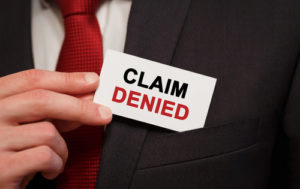 Most subrogation claims are small. If your subrogation law firm or recovery vendor does not handle small claims, you shouldn’t use them. Using HO-3 homeowner’s policy claims as an example, the average property damage claim payment was $8,787 according to data from the Insurance Research Council. In 2020, the average private passenger auto collision claim for physical damage was $3,588. Small claims make up the vast preponderance of insurance claims handled by today’s claim professionals. It only stands to reason that any subrogation program without an aggressive campaign to fully recover its small claims is doomed to mediocrity, at best.
Most subrogation claims are small. If your subrogation law firm or recovery vendor does not handle small claims, you shouldn’t use them. Using HO-3 homeowner’s policy claims as an example, the average property damage claim payment was $8,787 according to data from the Insurance Research Council. In 2020, the average private passenger auto collision claim for physical damage was $3,588. Small claims make up the vast preponderance of insurance claims handled by today’s claim professionals. It only stands to reason that any subrogation program without an aggressive campaign to fully recover its small claims is doomed to mediocrity, at best.
Recognizing the qualities of a firm which is willing to handle your small subrogation claims and the limitations of a firm who has dollar limits, cut-offs, and restrictions on what they will handle, is the first key to leveraging your subrogation work and getting the best recoveries across all lines of insurance and all sizes of claims. The world around us is full of messages extolling the virtue of the little things. In Luke 16: 10-14, it says, “Whoever can be trusted with small things can also be trusted with big things.” There is also the infamous quote from Joni Williams who said, “If you’re too big to do the small things, then you’re too small to do the big things.” There is truth in these words. Sometimes small potatoes make the best potato salad; and if a law firm cannot successfully handle a small claim, it speaks volumes about their concomitant ability to handle the large claim.
At MWL, we believe there is both a science and an art in making big things out of little things—not to mention a tremendous benefit for our clients. In fact, as lawyers, we have an obligation to do so. Hiring a TPA or subrogation vendor to send out two dozen identical demand letters on a $1,500 subrogation file does little more than devalue the case as time ticks by. Of course, subrogation is only successful when it is cost-effective. Some small claims may not merit years of litigation; but they do deserve the best subrogation lawyers you can find for them.
The problem is exacerbated by dumping small claim files on vendors who proclaim low contingent rates but will move heaven and earth to send out two dozen identical, insubstantial demand letters. The lowest contingent fees guarantee that many files will either not be resolved at all or will be settled for much less than their true value. Larger files that should see the inside of a courtroom in order to get top dollar never will. Like insurance catnip, however, the low contingent fees serve up the mirage of fee and cost containment while simultaneously devaluing an entire book of business. The only winner here is the short-lived vendor, who profits by selling short the wheat and leaving the client with the devalued chaff. A failure to invest in small subrogation claims and partner with a firm committed to all of your subrogation needs will almost without exception ensure the failure of subrogation efforts. The real cost of eating “fast food” never appears on the menu and is rarely discovered until it is too late. These are real and significant dollars that companies are passing over. They are stepping over dollars to pick up dimes and most don’t even know they are doing it.
T he key to subrogating the small claim is to turn it into a big claim—at least in the mind of the liability adjuster tasked with the responsibility of denying claims. Liability claims adjusters have little problem issuing boilerplate liability denials in the face of even the clearest of liability fact scenarios. Why? Because failure to pay a $1,500 auto collision loss will likely result in the claimant’s insurance company simply dropping the case because it is too small to cost-effectively handle. It is a game that has been perfected by most liability claims handlers. Even in cases where the subrogated carrier does not give up, the worst-case scenario is that the failure to pay $1,500 now might lead to potentially having to pay the $1,500 months or years down the road. The time value of money alone supports the “deny now, possibly pay later” liability claims philosophy.
he key to subrogating the small claim is to turn it into a big claim—at least in the mind of the liability adjuster tasked with the responsibility of denying claims. Liability claims adjusters have little problem issuing boilerplate liability denials in the face of even the clearest of liability fact scenarios. Why? Because failure to pay a $1,500 auto collision loss will likely result in the claimant’s insurance company simply dropping the case because it is too small to cost-effectively handle. It is a game that has been perfected by most liability claims handlers. Even in cases where the subrogated carrier does not give up, the worst-case scenario is that the failure to pay $1,500 now might lead to potentially having to pay the $1,500 months or years down the road. The time value of money alone supports the “deny now, possibly pay later” liability claims philosophy.
However, if failure to pay the $1,500 claim immediately carries with it the very real possibility of owing $15,000 at trial, attorneys’ fees, double costs, or being subjected to a bad faith claim, the tables are turned on the liability adjuster and the odds of quickly recovering the full $1,500 immediately increases to nearly a certainty. Liability claims adjusters are very busy, and the tactic of moving new demands and claims to the bottom of the pile is a very effective way of staying on top of a caseload. Each $1,500 claim looks like the last one—a blanket statement that the insured caused a loss and a non-threatening request to send the settlement check to the address below. Such wastes of time are just begging to be ignored or deleted. Getting the claim paid quickly and in full depends on a nuclear demand sticking out in the mind of the liability adjuster and carrying with it potential risks of owing considerably more than the $1,500. Your demand must be the one the liability adjuster can’t get out of his mind when he or she goes home and is enjoying dinner.
Little things such as demanding full disclosure of policy limits immediately and backing up such a request with state statutes and case law can also lift your demand letter out of obscurity and into the “insomnia” category. MWL has created a chart which details the laws pre-suit disclosure of liability policy limits in third-party actions.
Effective handling of small subrogation claims involves knowing how and when to employ state deceptive trade practices threats when a clear liability case is repeatedly turned away by a liability claims handler. Or dropping an unfair claims settlement practices statute threat for not reasonably attempting to settle the small, clear liability claim. The various Offer of Settlement statutes from state-to-state are the roadside IED’s buried in a subrogation demand that will be worrying the claims professional at dinner that night. Your small claim will be the first one he or she will want to remove from their inbox the next day because it could explode at any moment. The nuclear demand letter causes sleep loss. It utilizes every possible statute or insurance regulation promulgated by the National Association of Insurance Commissioners (NAIC) dealing with the required conduct in claims handling. Liability claims handlers who have not read the Model Unfair Claims Settlement Practices Act will have read it after they receive an effective nuclear demand.
Dropping a nuke on the head of a liability claims handler for failing to settle a small, clear liability claim simply because there is no downside in doing so is not the only leverage an effective nuclear demand letter can wield. The Model Act and various state laws prohibit failing to pay third-party claims wherein liability is reasonably clear.
Other state remedies can also turn a small subrogation demand letter into a thermonuclear nightmare for dilatory claims professionals. One such remedy in Georgia, for example, is the ability for experienced subrogation firms to wield the state’s statute for the recovery of attorney’s fees and expenses of litigation, known as Official Code of Georgia Annotated (OCGA) § 13-6-11, as a sword for their clients. It allows subrogation counsel to seek expenses of litigation if it can allege that the other side “has acted in bad faith, has been stubbornly litigious, or has caused the plaintiff unnecessary trouble and expense.” In other words, even if the contract does not so provide, the plaintiff can at least attempt to recover its fees and costs under this statute.
Threats alone may be sufficient to get the liability claims handler’s attention, but not quite enough to get the job done. For that reason, prompt and creative documentation of demands, creative use of investigation (from red-light camera photos to social media and satellite imagery), and persuasively papering the liability claim file with every needed to justify a prompt 100% settlement is also key.
Nuclear demand letters are extremely effective across all lines of insurance; form auto to homeowner to commercial policies. Even small workers’ compensation subrogation liens can often be resolved without having to wait on the employee’s lethargic counsel. Assignments of liens are possible in most states, and some states even provide for effective Special Arbitration resolution if both carriers are members. Small claims are small; but you’ve got a million of them. It’s time to start getting most of them settled.
Lee Wickert is a senior litigation associate with Matthiesen, Wickert, & Lehrer, S.C.’s Austin, Texas office. He is licensed in Texas and Wisconsin and is admitted to numerous federal courts throughout the country. For information about or questions concerning plumbing subrogation or subrogation of any kind in Texas, contact Lee at leewickert@mwl-law.com.






